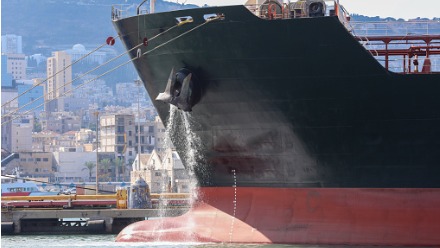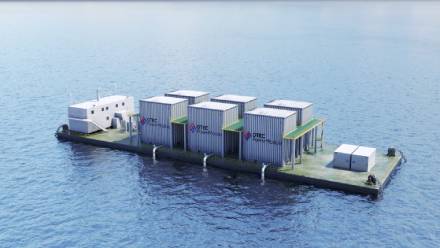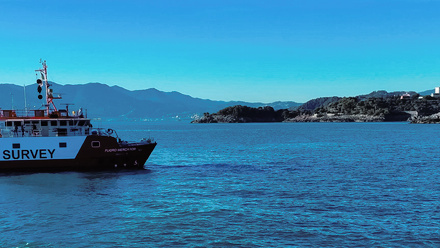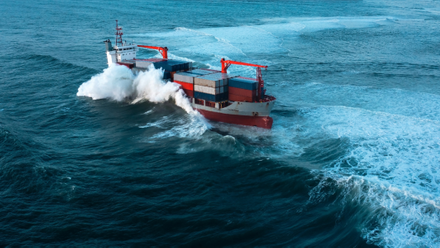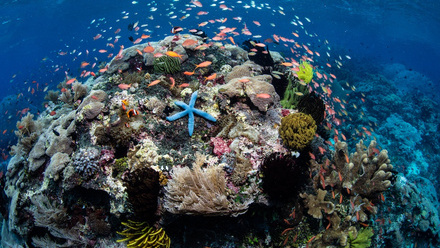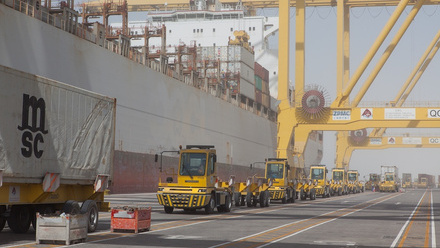Ocean fibre-optic cables to predict tsunamis, earthquakes and climate change
The 1.4 million kilometres of undersea cables that transit the globe, enabling modern communications, could be key to unlocking more data about our blue planet.
Scientists are keen to piggyback on fibre-optic networks, installed at great expense and repaired or replaced on ten-to-twenty-year cycles, to collect all sorts of useful information about our oceans at a fraction of the cost of traditional observing systems.
This ambition is gaining traction this year. The UK’s National Physical Laboratory (NPL) and the Measurement Standards Laboratory (MSL) in New Zealand, for example, are set to ‘convert’ a seafloor cable in the Pacific Ocean into an array of sensors for earthquakes and ocean currents. The team are using cutting-edge optical interferometry-based sensing on a 3,876km-long section of the Southern Cross NEXT cable on the floor of the Tasman Sea between New Zealand and Australia. The project uses the existing optical fibre infrastructure to gather continuous, real-time environmental data from the seabed in a highly seismically active area.
The technique was pioneered and tested in the Atlantic by NPL in 2021 (pictured above). “Those tests gave us insights in what type of signals could be detected (earthquakes, ocean currents, tides) and first-hand knowledge of how environmental signals are detected by the seafloor cables,” says Giuseppe Marra, Principal Scientist at NPL.
While the type of cable is similar, those in the Pacific tend to be longer than those found in the Atlantic. “This might pose some additional challenges in terms of the signal quality, but this is likely to be improved as the sensing technology advances,” states Marra.
While much of the focus is on early warnings for tsunamis, Marra is also excited about the potential of what could become global-scale monitoring of our oceans. “The technique is capable to detect deep ocean currents, and, in future, it could potentially also measure the seafloor temperature,” he enthuses. “There is a big data gap with respect to these parameters which are key to understand ocean circulation and its impact on climate."
Marra hopes this will be the beginning of a new era for Earth monitoring. “We now have a solution to start filling the huge data gap from the ocean due to the lack of ocean-bottom sensors,” he explains. “I am convinced new discoveries will come from these sensing technologies, especially as the technology improves and its coverage increases.”
Getting smart about ocean monitoring
The Science Monitoring And Reliable Telecommunications (SMART) Subsea Cables initiative seeks to revolutionise deep ocean observing by equipping transoceanic telecommunications cables with sensors inside their repeaters (amplifiers) at a modest incremental cost.
This is all part of an international collaborative effort, with the Joint Task Force (JTF) SMART Cables part of the UN Decade of Ocean Science for Sustainable Development. There are SMART projects at various stages of progress across the world, from Antarctica to Indonesia, and 2024 has been a big year for some of them, with several firsts being clocked.
In January, for example, Güralp Systems announced that the previous month it had successfully deployed the world’s first SMART cable to monitor seismic activity on the floor of the Ionian Sea, an area prone to natural hazards due to its proximity to Mount Etna.
The 21km cable, which was laid 30km off the coast of Sicily as part of a €2.4 million Italian demonstrator project, had three instrumented repeaters located at 6km spacings along its length, each of which housing a seismometer, accelerometer and externally mounted instrumentation pod containing an absolute pressure gauge and temperature sensor. The system was laid using standard commercial ocean cable-laying equipment during a 36-hour window to a depth of 2,000 metres.
In February, a supply and construction contract was signed for the SMART TAMTAM seafloor cable, which will connect Vanuatu and New Caledonia in the Pacific Ocean. The integration of four advanced climate change nodes within this submarine cable system will facilitate real-time monitoring of seismic activities and efficient tsunami detection, particularly in the seismically volatile New Hebrides Trench.
Then in March 2024, Alcatel Submarine Networks was awarded €154 million for its Anel CAM project, the first dual-use telecom/SMART system in development. It is designed to both replace the current ring linking Portugal with Azores and Madeira as well as provide critical new sensor capabilities for tsunami and earthquake early warning in the region. The new 3,812km submarine cable system will have 50 SMART repeaters, enabling seismic detection, climate and environmental monitoring, and data transmission for scientific purposes.
Oceanographers and telecommunications as a team
This isn’t the first time scientists have sought to capture data from the international telecoms industry to better understand our little-known oceans. Indeed, as IMarEST Fellow Stephen Hall, Head of Partnerships for The Nippon Foundation & GEBCO Seabed 2030 project, points out, there’s a long history of collaboration between oceanographers and the telecoms industry.
“Mapping for cable laying is a global activity that has been underway since the very first [transoceanic] cables were laid in the 19th century,” explains Hall. “Indeed, it was surveying for transatlantic telegraph cable routes that first revealed the existence of the mid-Atlantic ridge that forms part of the world’s longest mountain range.”
Almost all transoceanic internet traffic is carried on underwater fibre-optic cables carefully laid on the deep ocean floor and new cables are constantly put down to enable more bandwidth and higher speeds, and to replace ones that have been damaged or need upgrading.
This ongoing cycle of work presents great synergies for researchers like Hall, whose work at Seabed 2030 needs to leverage collaboration and partnerships to build a high-resolution digital map of the world’s ocean floor by 2030.
All this means there’s clearly a huge gain to be made partnering with cable companies as they continue to cross the oceans with high-tech cables powering our interconnected modern world.
Tell us what you think about this article by joining the discussion on IMarEST Connect.
Newsletter image: map showing technology test in the Atlantic by NPL; credit: NPL.
Main image: fibre-optic cable coming ashore in North Wales; credit: Shutterstock.

